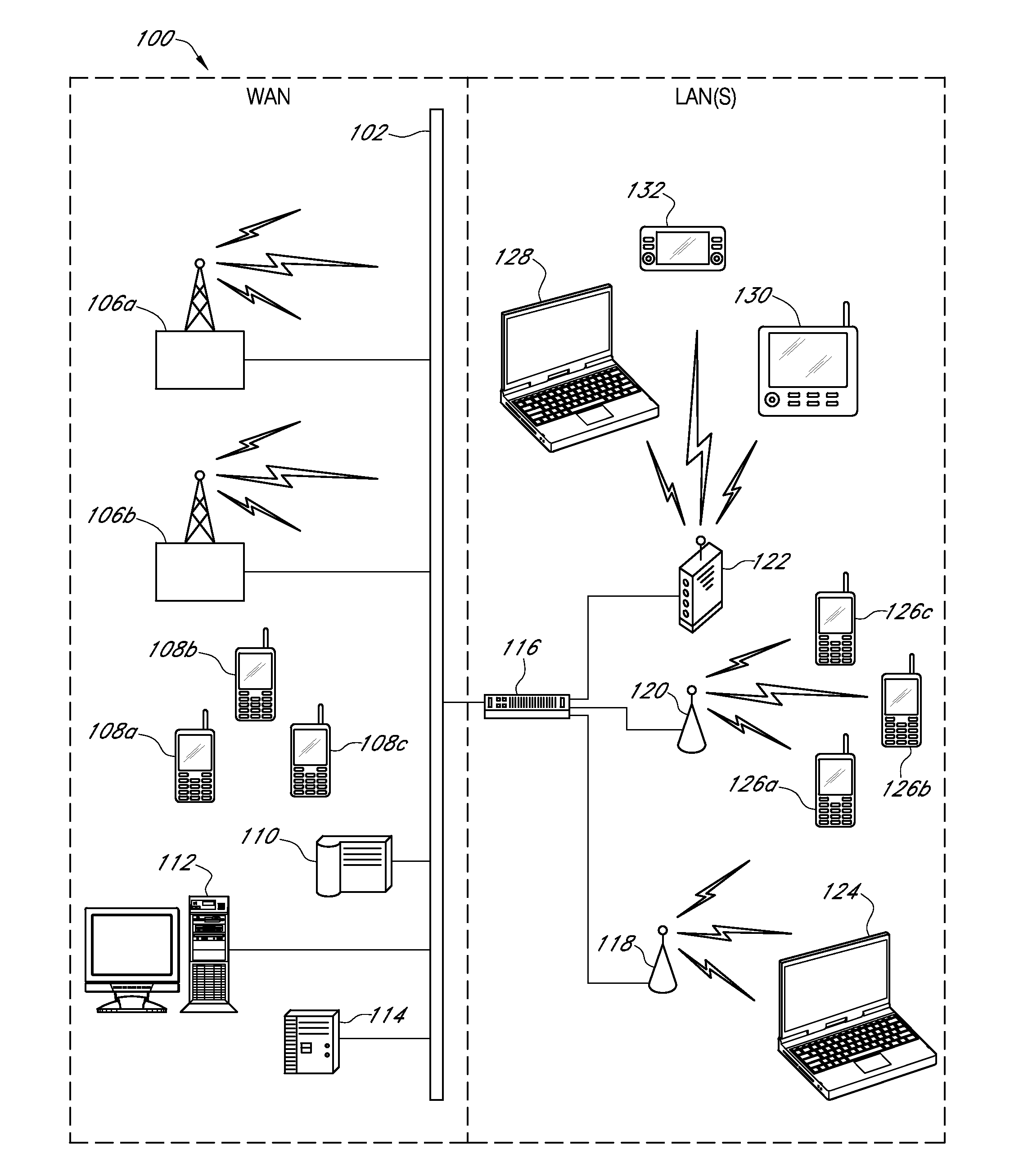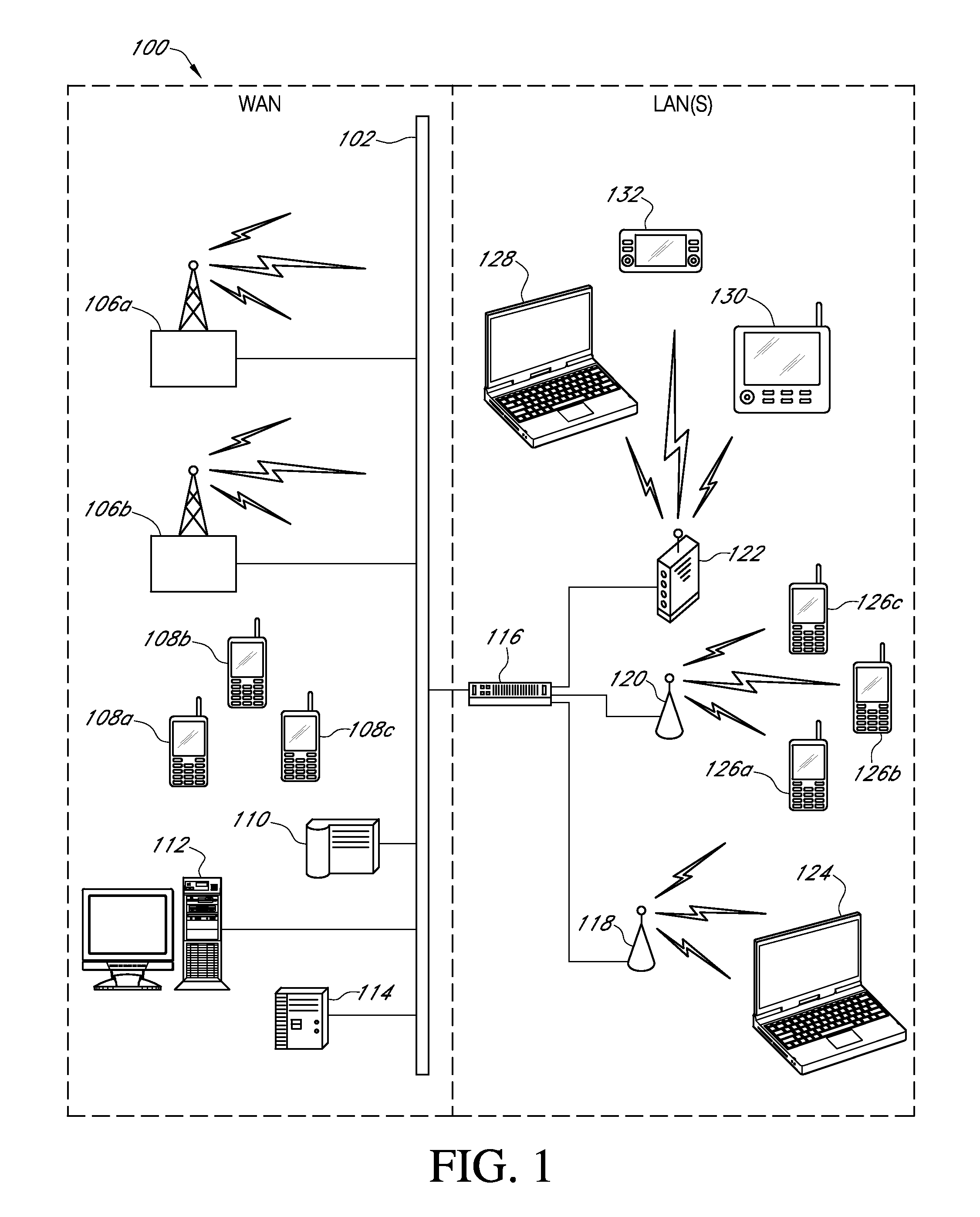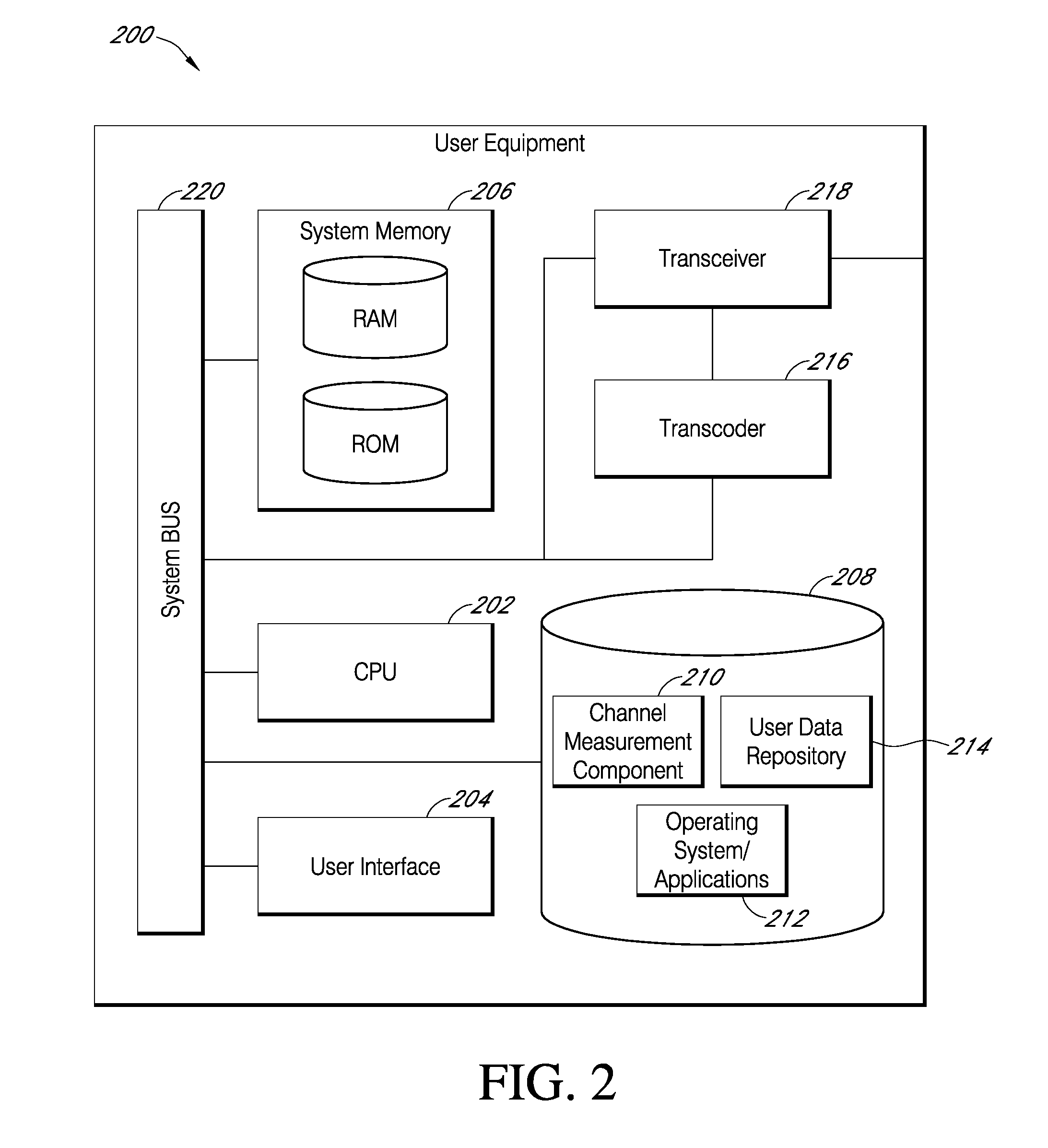Systems and methods for determining time varying radio frequency isolation characteristics between network cells
a radio frequency isolation and network cell technology, applied in the field of measuring radio frequency isolation, can solve the problems of overly conservative estimation, deficiency of modern planning utilities, and inability of digital tools to accurately predict/forecast challenging radio frequency propagation environments
- Summary
- Abstract
- Description
- Claims
- Application Information
AI Technical Summary
Benefits of technology
Problems solved by technology
Method used
Image
Examples
Embodiment Construction
[0031]In accordance with an exemplary embodiment of the present invention, FIG. 1 illustrates a networked computing system 100 including various wireline and wireless computing devices that may be utilized to implement any of the radio channel isolation determination and network resource allocation processes associated with various embodiments of the present invention. The networked computing system 100 may include, but is not limited to, a group of service provider controller devices 110, 112, and 114; remote base stations 106a-b that may be associated with larger cells (e.g., macrocells and / or microcells) and may be overarching and / or neighboring base stations to any of the other local base stations 118, 120, and 122 within a particular region of the networked computing system 100; multiple remote user equipment 108a-c (e.g., optionally including cell phones, PDAs, net books, electronic book devices, etc.) that may be provided service by any of the remote base stations 106a-b; a d...
PUM
 Login to View More
Login to View More Abstract
Description
Claims
Application Information
 Login to View More
Login to View More - R&D
- Intellectual Property
- Life Sciences
- Materials
- Tech Scout
- Unparalleled Data Quality
- Higher Quality Content
- 60% Fewer Hallucinations
Browse by: Latest US Patents, China's latest patents, Technical Efficacy Thesaurus, Application Domain, Technology Topic, Popular Technical Reports.
© 2025 PatSnap. All rights reserved.Legal|Privacy policy|Modern Slavery Act Transparency Statement|Sitemap|About US| Contact US: help@patsnap.com



